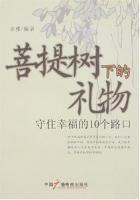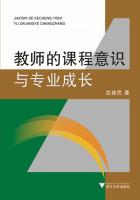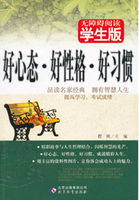(1) We can see from this chart that the average number of hours a student spends on the computer per week has increased sharply.
(2) In 1990, it was less than 2 hours;and in 1995, it increased to almost 4 hours; while in 2000, the number soared to 20 hours.
(3) Obviously, computers are becoming more and more popular.
(4) Why do students nowadays tend to use computers more and more?
(5) There are several reasons for this.
(6) First, computers facilitate us in more aspects of life.
(7) Also, the fast development of the Internet enlarges our demands for using computers.
(8) We can easily contact with friends in remote places through the Intemet.
(9) Besides, the prices of computers are getting lower and lower,which enables more students to purchase them.
(10) Along with the time spent on computers, there arise some problems.
(11) The most serious one is that many students are spending so much time playing PC games so that they ignore their studies.
(12) It is urgent to let the students use computers in a proper way.
第一段(1)~(3):通过图表揭示变化。(1)General statement开头句,笼统说明有变化;(2)对图表数据的具体阐述、分析;(3)该段落的小总结。
第二段(4)~(9):分析产生变化的原因。(4)以问句开头引起原因分析;(5)结构句,表明有几个原因;(6)~(9)列举三个原因。
第三段(10)~(12):个人认为存在的问题与建议。(10)开头句,说明产生问题;(11)点明最严重的问题;(12)提出建议。
六、写图表作文需要注意的关键问题
1.筛选数据
图表提供的资料数据是否需要在文中一一列出?应选择或忽略哪些数据?引用数据的目的在于更有力地阐述论点,就像论据有主次,数据也应选择具有典型性和代表性的数据一样,不必一一列出。以上一节的表为例,列出1986年至1990年每一年grain的消费量只会显得繁琐、重点不突出。试试这句话:The percentage of grain consumption decreased gradually, from 49 percent in 1986 to 45 percent in 1990. 简明扼要地说明变化趋势是递减,两端数据49%和45%足以说明变化趋势。又如milk和meat的变化,都说明同一观点:人们的经济收入增加了,生活水平提高了,能够消费得起价格较高的肉奶食品。这样,描述milk的变化后,就不必重复meat的变化。简单一句“The same is the case with meat”即可。或者直接计算出增加值或减少值,如:The amount of grain in people"s diet has decreased by 4%. However,the amount of milk has increased 3%and that of meat has increased 4%.
总之,挑选有说服力的数据,主要是首尾两端数字或其增减值。强调数据间的关系,突出变化,发现数据的变化规律,引用了典型数据,还须进一步强调突出这种变化,使论证更有力。以“Student Use of Computer”为例,有学生写道:But in 2000, students spent nearly 20 hours per week on the computer. This number was ten times that of 1990 and five times that of 1995. 像这样用倍数或比例更能说明问题,给人留下深刻印象。
2.使用主题句
无论写作或阅读都强调主题句(topic sentence)。主题句是能高度概括文章段落中心内容或主题思想的句子,通常位于段首或段尾。图表作文的主题句最好放在段首,使其既能提纲挈领又能起到衔接的作用,使文章思路清晰,过渡自然。
通常第一段的主题句都表示发生了某种变化。例如:
(1) Great changes have been taking place in(eg.People"s diet, student use of computer...) from (eg. 1995 to 2000).
(2)In recent years, the time students using computers has increased greatly.
第二段分析引起变化的因素,主题句通常表示引起这种变化的原因有几点。例如:
(1) There are many factors that have stimulated this huge change;
(2) Such changes are mainly caused by two reasons.
第三段总结归纳或提出问题,很简短。例如:
(1) In short, with the improvement of people"s living standards, changes in their diet will be greater and more obvious. (预测未来变化趋势。)
(2) There is sure to be a lot of problems in student use of computer, however...(提出问题。)
七、图表作文中常用的表达
1.开头的常用表达
开头的常用表达有以下几种:
(1) The table/chart diagram/graph shows(that)...
(2) According to the table/chart diagram/graph,...
(3) As is shown in the table/chart diagram/graph,...
(4)As can be seen from the table/chart/diagram/graph/figures,figures/statistics show(that)...
(5) It can be seen from the figures/statistics that...
(6) We can see from the figures/statistics that...
(7) It is clear from the figures/statistics that...
(8) It is apparent from the figures/statistics/table/chart/diagram/graph figures that...
(9) The table/chart/diagram/graph shows/describes/illustrates how...
2.data的具体表达法
最常用的四种表达变化的结构:
(1)动词+副词形式(Verb+Adverb),如:
The number of sth.+increase / jump / rise / decrease / drop / fall / fluctuate...
+ insignificantly / significantly / slightly / suddenly / rapidly / dramatically / sharply / steeply / steadily / gradually / slowly...+ from(第一时间)to(第二时间) / between(第一时间)and(第二时间)
(2)形容词+名词形式((there be)Adjective + Noun),如:
There was a(very)sudden / rapid / dramatic / significant / sharp / steep / steady / gradual / slow / slight+increase / jump / rise / decrease / drop / fall / fluctuation(注意:上述很多词不可用于修饰fluctuation)+in the number of sth.from(第一时间)to(第二时间)/between (第一时间)and(第二时间)
(3)波动。
There was a minor fluctuation between...
Sth.Remained fairly steady fluctuating between...and...
(4)稳定。
The number of sth.remained steady/stable from (第一时间) to (第二时间)/between (第一时间) and (第二时间)
The number of sth. stayed the same from (第一时间) to (第二时间)/between (第一时间)and(第二时间)
There was little change/hardly any change/no change in the number of sth.from from(第一时间)to(第二时间)/between(第一时间)and(第二时间)
3.表示比较
常用以下句型表示比较:
(1) there are a lot similarities/differences between...and...
(2) A has something in common with B
(3) the difference between A and B lies in...
(4) sth. differs from sth. else
4.描述过程中所用的conjunctional words/sentences
(1)并列。
as well as(句首/中),also,as well(句尾), either, neither,too, moreover,furthermore, in addition, additionally, besides, what"s more,apart from...
(2)举例。
for example,for instance,to illustrate,as an illustration,in particular,particularly,especially
(3)事实。
as a matter of fact,in fact,actually,as long as,so long as...
(4)雷同/近似。
similarly,likewise(句首/尾),at the same time,equally...
(5)转折。
however,whereas,nevertheless,nonetheless,though,although,even though,while,yet,on the contrary,contrarily,in contrast,conversely,on the other hand,unlikely,instead(of),in spite of,despite of...
(6)原因与结果。
① causesuggestion(几乎不常用)
since/now that...; I hope that...;because of/on account of/owing to/thanks to+(doing)sth. , I hope that...
② causeeffect(较常用)













